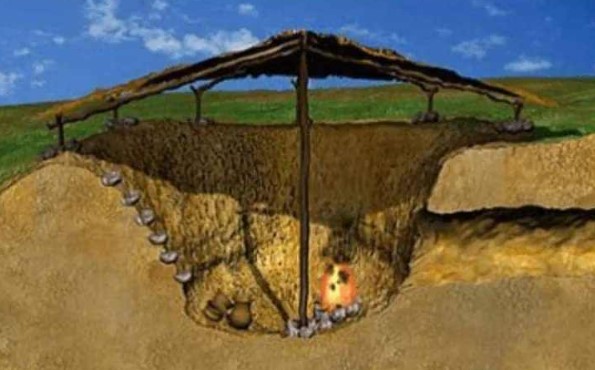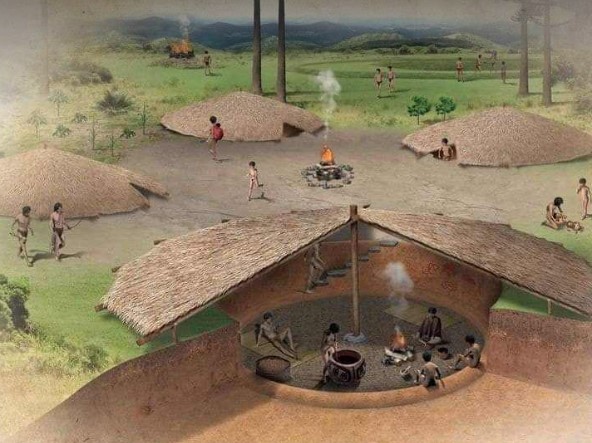The archeology of southern Brazil has been paying attention, since the 1960s, to a very special type of ancient human occuption found in many points of the plateau in the states of São Paulo, Paraná and, mainly, Santa Catarina and Rio Grande do Sul, in addition to some similar finds near the coast, in the south of Santa Catarina.
The archeology of southern Brazil has been paying attention, since the 1960s, to a very special type of ancient human occupation found in many points of the plateau in the states of São Paulo, Paraná and, mainly, Santa Catarina and Rio Grande do Sul, in addition to some similar finds near the coast, in the south of Santa Catarina.
The Kaingang, one of the 305 current ethnic groups in Brazil, already inhabited the southern plateau three thousand years before the arrival of Europeans. These towns were known as Proto-Kaingang, towns of the Taquara Tradition or People of the Underground Houses.
To protect themselves from the harsh winter that punishes the high regions of southern Brazil, called Cima da Serra fields, they built their houses underground, thus keeping them protected from the strong and icy winds that cut the plateau. Sometimes the walls were compacted with finer clay, resulting in a coating layer.
underground houses, ethnic groups, earth architecture
The roof was supported by posts: a main post in the center, which descended to the floor of the house, and side posts, which radiated from the central mast and rested on the surface of the ground, on the outside. This roof was just above ground level, ensuring ventilation, lighting and traffic.

These are true circular houses, dug into the ground: in some cases, in basalt rock, in others, in composite basalt or soft sandstone rock. Its dimensions are variable; The most important records reveal structures with average sizes between 2 and 13 meters in diameter with an average depth of 2,5 to 5 meters high, with recorded cases of 4 and up to 6 meters deep. According to the description of several researchers, from the best preserved houses, in the circular hole that delimited the house, a cover of leaves was placed on a wooden frame, partly fixed at the base of the house, and partly fixed on the side edges of the well, even with the help of stones.
In some houses, archaeologists mention having found a floor covering and, in others, a stone covering on the walls or part of them. Although isolated underground houses are found in a significant number of archaeological sites, it is common to find groups of these houses, either forming pairs, or forming true towns of more than 5 houses, with several groupings between 8 and 10 of them, and There are even cases of more than 20 houses in the same place. The space between these houses varies from 1 to 10 meters, on average.
